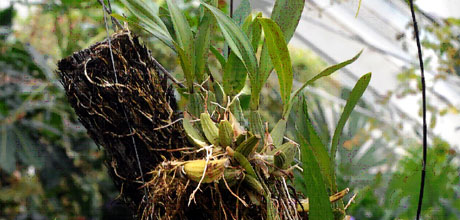Plant Attracts Wasps and Humans
This article was first published on 23 Nov 2011.

Brassia verrucosa
There are some fascinating plants that have evolved to trick insects and animals to help aid in their survival. One genus of plant that does this is Brassia orchids. One of its common names is the spider orchid because its flower resembles a spider.
It uses mimicry to fool the spider hunter wasp into stinging the lip of the flower and the contact causes pollen to stick to the wasp’s head. When the wasp gives up trying to grasp its “prey” it moves onto another flower. Pollination takes place as the pollen is brushed from the wasp’s head onto the next flower.
Brassia verrucosa or warty spider orchid is an epiphytic orchid. It grows in shady evergreen to semi deciduous humid cloud forests of Central America and the top of South America, perching on tree trunks and large branches at elevations between 900 – 2400m.
They like gentle air movement around the roots, so it’s good to grow them in a pot with coarse bark as a medium, or wired onto a log such as a ponga. High humidity is important and gentle misting is required. Minimum night time temperatures of 10°C are recommended. Bright light is ideal but not direct sun light which may burn the leaves.
Brassia verrucosa can be seen growing in the east wing of Dunedin Botanic Garden’s Winter Garden Glasshouse, hanging on a small ponga log suspended from the roof. It has a spicy scent and can be found if you let your nose guide you to the scent.
Stephen Bishop is curator of the Winter Garden Glasshouse at Dunedin Botanic Garden.


